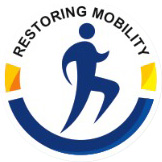Knee Arthroscopy
What is Knee Arthroscopy?
Knee arthroscopy is a procedure used to treat knee joint disorders. Diagnostic arthroscopy is required for the diagnosis of intra-articular knee problems such as synovial, meniscal, ligamentous, and articular cartilage pathology. Mastery of diagnostic arthroscopy is important for orthopedic surgeons while treating knee disorders.
Knee arthroscopy is an important therapeutic treatment for treating numerous forms of knee problems. It is a surgical technique that includes creating a small incision and inserting a small camera known as an arthroscope into the knees. The insertion of an arthroscope aids in seeing the view within the joints on a computer screen. This aids in the diagnosis of knee problems. In certain circumstances, knee issues may be treated with a small instrument included inside the arthroscope.
Why is a knee arthroscopy necessary?
In individuals who are having knee discomfort, knee arthroscopy is indicated. The surgeon may use knee arthroscopy to determine the cause of the knee discomfort or to confirm it.
Arthroscopy is useful in diagnosing and repairing joint ligaments, as well as treating a variety of other disorders associated with knee difficulties. These are the requirements listed below.
- Surface abrasion or articular cartilage damage
- Cyst extraction
- Meniscus or floating cartilage tear
- Patello-femoral (knee-cap) dysfunctions
- Washout of infected knees
- Reconstruction of the anterior cruciate ligament
- The nature of the knee problem and the kind of therapy utilized determine recovery duration and prognosis (likely result of the medical condition).
Pre-operative Preparation
It is recommended that Aspirin and other anti-inflammatory medications be avoided 5 days before knee arthroscopy. If pain drugs are necessary, it is best to visit your doctor first. Routine medicines, if any, are permitted to be used with the surgeon’s approval prior to a few days of knee arthroscopy, and smoking must be discontinued prior to a few days of knee arthroscopy.
The day before the surgery
Patients must follow their surgeon’s instructions the day before surgery. A record of medical records and diagnostic tests should be maintained on hand in case there are any subsequent difficulties.
Procedure Day
Fasting is required for 6 hours before surgery. For identifying purposes, the limb having surgery will be marked. After administering an anesthetic, the knee region must be sterilized. A tourniquet is placed on the patient’s thigh to make the procedure “blood-free.” A tourniquet is a form of bandage that is used to regulate venous and arterial circulation over an extended period of time. Patients are given anesthesia prior to surgery. This might be:
General anesthesia is used to induce total slumber or unconsciousness.
A local anesthetic is used to numb the knees.
A regional anesthetic is used to numb the region around the waist.
Knee Arthroscopy Methods/Techniques
Knee arthroscopy typically takes at least 30 minutes to complete. It is mostly determined by the amount of surgical work necessary to be performed by the surgeon within the patient’s knee joint.
At the commencement of knee arthroscopy, the surgeon will make small incisions. Following that, saline or sterile salt water is pumped into the knees to enlarge them. An arthroscope is inserted via one of the incisions and a camera connected to it allows the surgeon to view inside. Following the detection of a problem inside the knees, the surgeon inserts small devices that fix the condition.
Following the end of the surgical procedure, the surgeon drains saline from the patient’s joints. After that, the cuts are stitched together.
Following the Procedure
Patients are transferred to the recovery room after the surgical procedure is done. A bandage is wrapped around the operated knee. Within 24 hours, the bandage surrounding the wound may be removed, and waterproof dressings can be used to cover the wounds. Swelling is common after knee arthroscopy.
Following healing, patients may resume their usual routine with the surgeon’s approval. Following surgery, follow-up sessions are essential to check the health of the knees.
Physiotherapy and Post-Operative Exercises
Following the completion of the knee arthroscopy, patients are recommended to engage in exercise and physiotherapy treatments. Thigh muscle strengthening is critical in these situations. Swimming and cycling are two activities that might help you gain muscle. These activities should only be carried out after consultation with the surgeon.
Management of Pain
Patients are given medicines for short-term pain relief after surgery. Opioids, nonsteroidal anti-inflammatory medications (NSAIDs), and local anesthetics are examples of these. A combination of these drugs may be employed by the surgeon depending on the situation. Opioids, despite their effectiveness, may be addicting. This is due to the fact that they are narcotic in nature. As a result, it is advised to discontinue the use of opioids after the pain has been relieved.
Dressing Care
Patients are discharged from the hospital with their knees bandaged. This bandage must be kept clean and dry at all times.
Recovery
The recovery period after knee arthroscopy has been observed to be shorter than that of typical open knee procedures. It is critical to follow the post-treatment guidelines provided by the surgeon.
Complications and Risks
In general, the risks of knee arthroscopy are lower. In the event of a knee injury, such as partly worn-out knee cartilage, the odds of short-term recovery are roughly 65 percent. Even after arthroscopic surgical procedures, people with osteoarthritis show minimal improvement. The risks and hazards of arthroscopic knee surgery are as follows.
- Infection
- Bleeding after surgery
- Stiffness
- Numbness around the site of the incision
- Nerve and vessel damage
- The syndrome of chronic pain
- Deep vein thrombosis (DVT)

